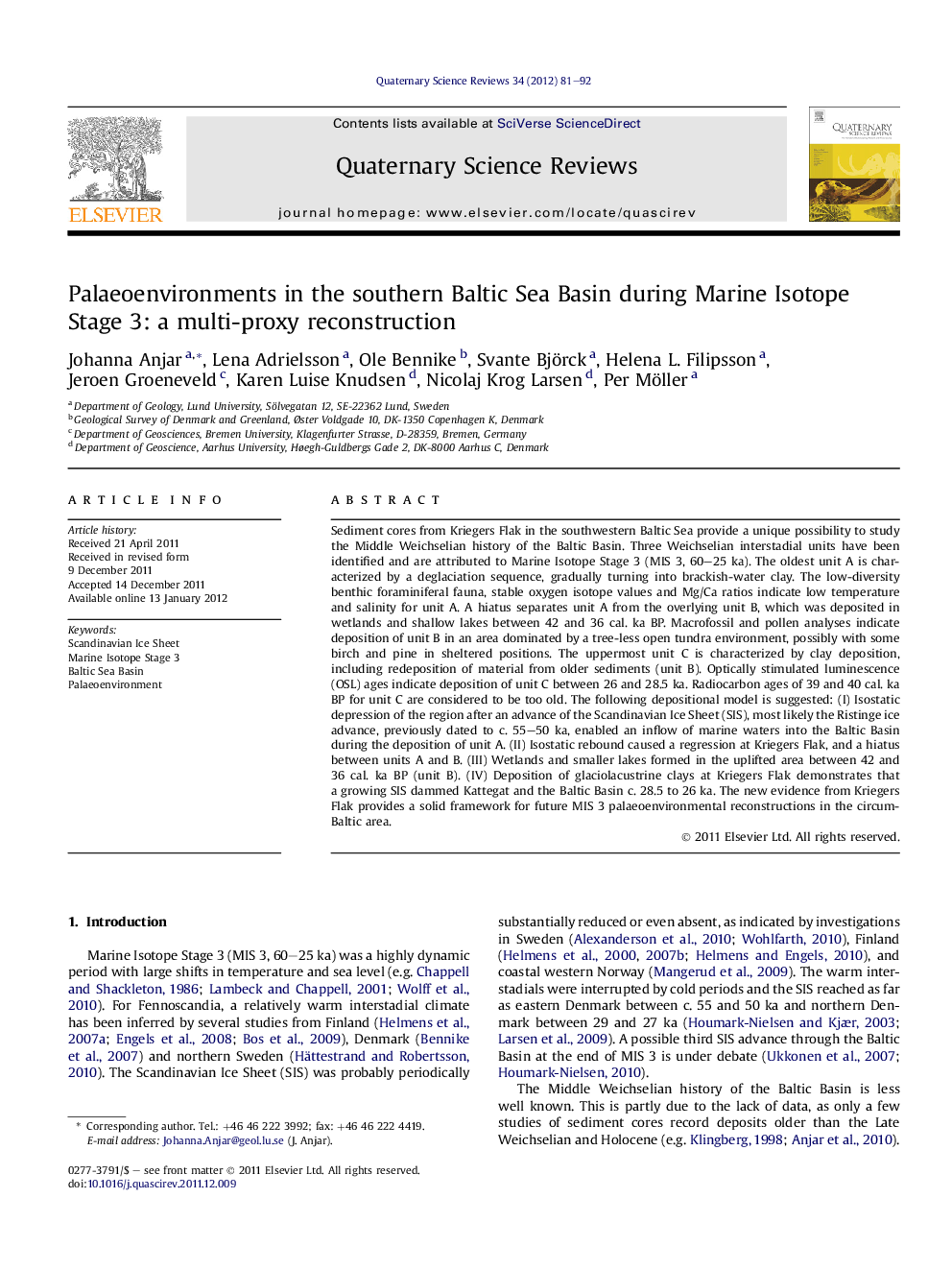| کد مقاله | کد نشریه | سال انتشار | مقاله انگلیسی | نسخه تمام متن |
|---|---|---|---|---|
| 4735792 | 1640900 | 2012 | 12 صفحه PDF | دانلود رایگان |

Sediment cores from Kriegers Flak in the southwestern Baltic Sea provide a unique possibility to study the Middle Weichselian history of the Baltic Basin. Three Weichselian interstadial units have been identified and are attributed to Marine Isotope Stage 3 (MIS 3, 60–25 ka). The oldest unit A is characterized by a deglaciation sequence, gradually turning into brackish-water clay. The low-diversity benthic foraminiferal fauna, stable oxygen isotope values and Mg/Ca ratios indicate low temperature and salinity for unit A. A hiatus separates unit A from the overlying unit B, which was deposited in wetlands and shallow lakes between 42 and 36 cal. ka BP. Macrofossil and pollen analyses indicate deposition of unit B in an area dominated by a tree-less open tundra environment, possibly with some birch and pine in sheltered positions. The uppermost unit C is characterized by clay deposition, including redeposition of material from older sediments (unit B). Optically stimulated luminescence (OSL) ages indicate deposition of unit C between 26 and 28.5 ka. Radiocarbon ages of 39 and 40 cal. ka BP for unit C are considered to be too old. The following depositional model is suggested: (I) Isostatic depression of the region after an advance of the Scandinavian Ice Sheet (SIS), most likely the Ristinge ice advance, previously dated to c. 55–50 ka, enabled an inflow of marine waters into the Baltic Basin during the deposition of unit A. (II) Isostatic rebound caused a regression at Kriegers Flak, and a hiatus between units A and B. (III) Wetlands and smaller lakes formed in the uplifted area between 42 and 36 cal. ka BP (unit B). (IV) Deposition of glaciolacustrine clays at Kriegers Flak demonstrates that a growing SIS dammed Kattegat and the Baltic Basin c. 28.5 to 26 ka. The new evidence from Kriegers Flak provides a solid framework for future MIS 3 palaeoenvironmental reconstructions in the circum-Baltic area.
► A Marine Isotope Stage 3 interstadial succession was identified in Baltic Sea cores.
► A brackish fauna established after a retreat of the Scandinavian Ice Sheet.
► A low-water phase with an open tundra landscape occurred 36–42 cal. ka BP.
► Ice- damming of the Baltic basin at c. 29 ka led to an inundation of the area.
Journal: Quaternary Science Reviews - Volume 34, 21 February 2012, Pages 81–92